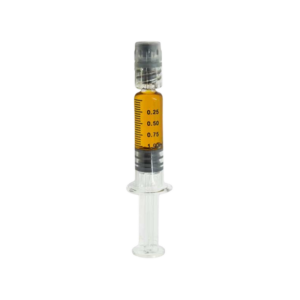
$19.99 – $999.99
3Chi
3Chi CBC Isolate Syringe 1 g – 100 g
| Total CBC: | 90-99% |
| Type of extract: | CBC Isolate |
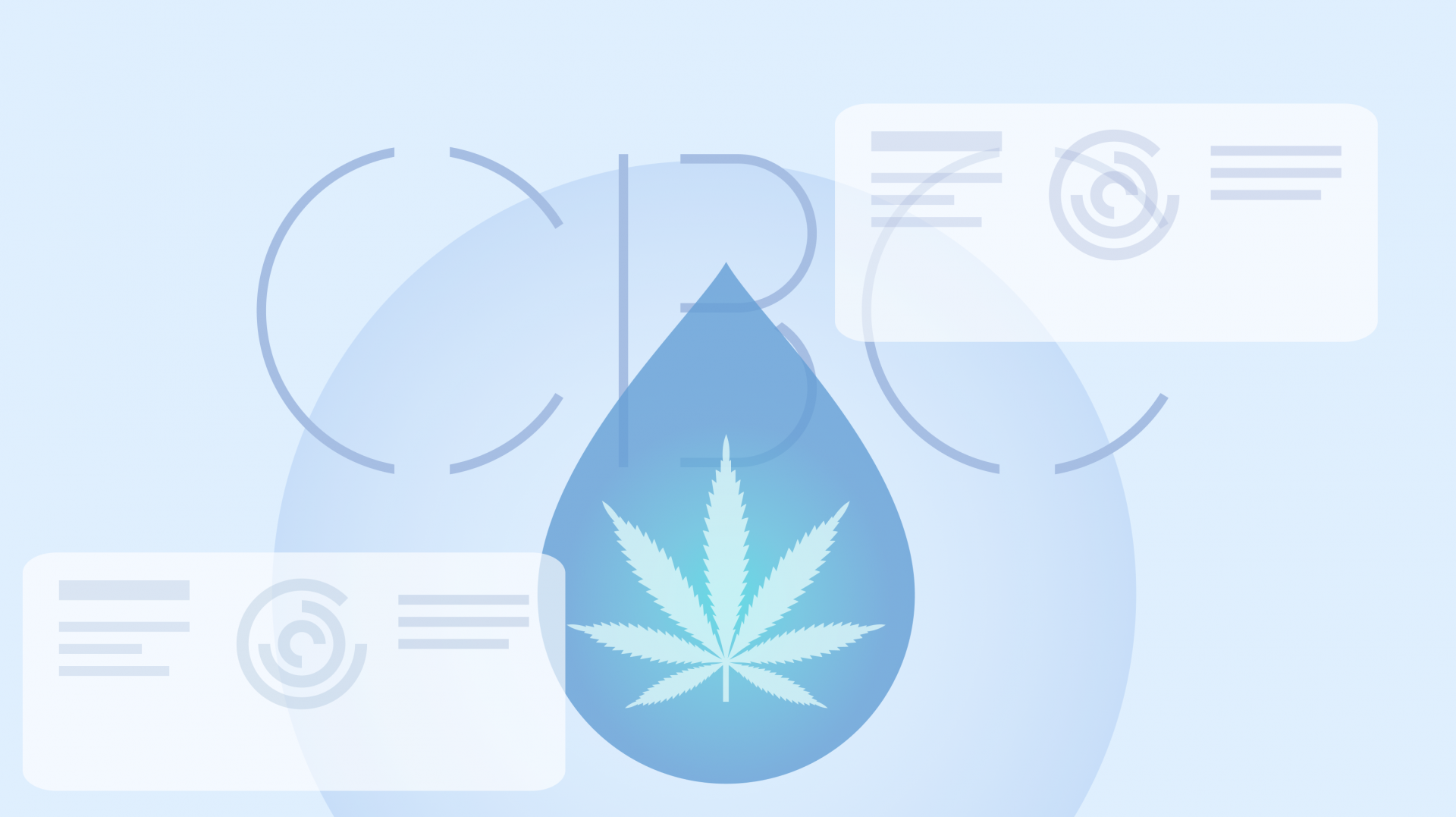
CBC (cannabichromene) is one of the six major cannabinoids produced in both hemp and marijuana.
It’s shown promise for managing chronic pain, depression, & neurodegenerative disease.
By now, most people have heard of THC and CBD — two of the most abundant and medically relevant constituents in the cannabis plant.
CBC is a closely related compound that’s starting to become more popular as a supplement. This unique cannabinoid has been shown to offer a variety of unique health benefits. It’s shown promise as an anticancer agent, painkiller, and neuroprotective agent.
Some studies have even shown CBC could be a more effective antidepressant than CBD.
In this article, you’ll learn everything you need to know about CBC — including how it works, how to use it, and where to buy CBC-rich extracts.
CBC is short for cannabichromene. It’s the third most abundant cannabinoid in the hemp plant after CBD (cannabidiol) and THC (tetrahydrocannabinol).
This cannabinoid is considered a “sibling” of CBD and THC because it’s made from the same precursor — CBG (cannabigerol).
First, the hemp plant manufacturers CBG (cannabigerol), which can be thought of as the “cannabinoid stem cell.” From here, CBG is converted into either CBD, THC, or CBC.
Most hemp plants convert the majority of the CBG into CBD, while marijuana plants convert the majority of the CBD into THC instead. Plant breeders are now turning their focus towards CBC by making strains that emphasize the conversion of CBG into CBC instead.
CBC is completely non-psychoactive, which means that you won’t feel high no matter how much you take.
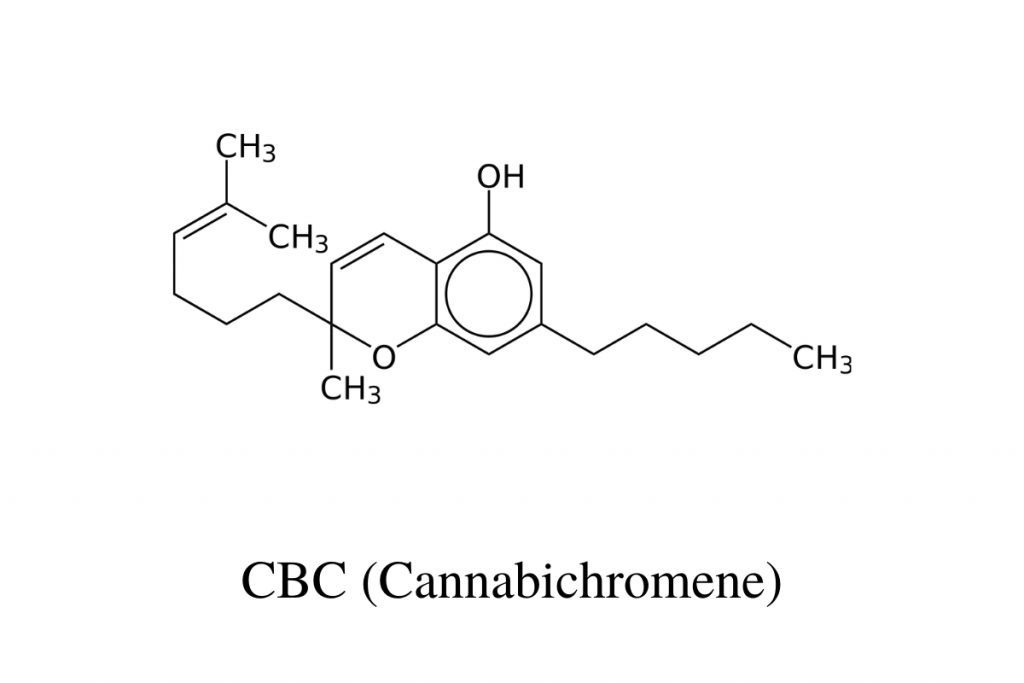
Cannabinoids are a large and diverse group of chemicals produced in cannabis, as well as other species of plants. Even the human body makes cannabinoids (called endocannabinoids), which serve as both a neurotransmitter and a hormone.
Virtually all life on earth has an endocannabinoid system (ECS for short) — which acts as a communication channel for the internal organs. Messages are sent through the nervous system to send messages from the brain to the rest of the body, while the endocannabinoids travel in reverse to confirm the message was delivered.
The ECS is involved in virtually all aspects of human health and wellbeing. When the ECS isn’t functioning properly, we fall out of balance and may become unable to maintain optimal homeostasis (balance). This opens us up to all sorts of adverse side effects and chronic health conditions.
The cannabinoids work by interacting with this system in different ways.
Some cannabinoids are non-psychoactive, like CBD, CBC, THCC (tetrahydrocannabiorcol), CBG (cannabigerol), CBDV (cannabidivarin), or CBCV (cannabichromevarin). These cannabinoids interact with the ECS and other receptors but don’t have a strong effect on the CB1 receptors in the brain (which is what makes us feel high when we use THC).
Other cannabinoids do activate this receptor and produce psychoactive effects.
These effects vary in potency, starting with low-potency psychoactive cannabinoids like CBN (cannabinol) and THCV (tetrahydrocannabivarin).
Moderate psychoactive cannabinoids include HHC (hydroxyhexahydrocannabinol), delta 7 THC, delta 8 THC, delta 9 THC, and delta 10 THC.
The strongest cannabinoids are THCP (tetrahydrocannabiphorol) and synthetic cannabinoids such as THC-O-Acetate.
There hasn’t been a lot of research on CBC yet, but the effective dose appears to be on par with CBD so far.
The average dose of CBC is between 10 and 50 mg.
CBC is a very safe cannabinoid — just like CBD. It’s also wholly non-psychoactive, which means even very high doses aren’t going to make you feel high and are unlikely to produce side effects.
CBD (cannabidiol) and CBC are very closely related, but there are some key differences.
CBC primarily interacts with the vanilloid receptors (TRPV1) and has only a minor impact on the CB1 and CB2 endocannabinoid receptors. On the other hand, CBD has a stronger affinity for the CB1 and CB2 receptors.
What does this mean?
CBD and CBC have similar benefits, but each has slight advantages in certain areas over the other.
For example, activating the TRPV1 vanilloid receptors has a greater benefit on regulating the density of bones than the CB1 or CB2 receptors. Because of this, CBC is thought to be better for regulating bone density than CBD.
Related: What Does CBD Feel Like?
| Metrics | CBD (Cannabidiol) | CBC (Cannabichromene) |
| Average Concentration in Hemp | 16% | <1% |
| Average Concentration in Marijuana | 5% | <1% |
| Primary Health Benefit | Anti-inflammatory | Antidepressant |
| Primary Target Receptors | CB1 & CB2 | TRPV1 |
| Psychoactivity | None | None |
| Cost Per Milligram | $ | $$ |
CBC is still considered a novel cannabinoid, so there aren’t many companies making CBC-specific products — yet. Things are already starting to change, and we’re seeing more CBC-heavy tinctures, hemp flowers, and concentrates enter the market over the past couple of months.
There are no specific CBC hemp flowers available quite yet — but cannabis breeders are currently working on this.
However, there are some strains of hemp or marijuana that contain higher-than-average CBC content. These flowers rarely have more than about 1 or 2 percent CBC. The majority of the cannabinoid profiles in these plants are still either CBD or THC.
Strains High in CBC:
A tincture or oil is the most common form you’ll find CBC at the moment. This is because it’s much easier to make CBC products from a concentrated form.
The raw hemp is put through various extraction stages to separate the contents. The main target is pure CBD, which is used to make oils, capsules, gummies, and concentrates. As a byproduct, manufacturers also end up with a much smaller volume of CBC, CBN, THCV, or CBG extracts — which they use to make individual oils or tinctures.
Like CBD oils, you can get CBC tinctures and oils in different potencies. For the dose, you can follow the same guidelines for dosing CBD oil. CBC and CBD have very similar doses. Just keep in mind you may have to adjust the dose higher or lower once you start to use it and feel how it affects you individually.
CBC concentrates usually come in the form of isolates containing 90–95% pure CBC. This cannabinoid doesn’t crystalize. This means you’ll always find it in a thick, syrup-like extract rather than the conventional crystalline or powdered format.
Most companies sell CBC isolate in syringes to make it easier to use.
You can add these concentrates to a vaporizer, use it in a dab rig, or eat it directly.

| Total CBC: | 90-99% |
| Type of extract: | CBC Isolate |
A CBC vape cartridge is essentially just a standard 8 mm replaceable vape cart filled with the same CBC isolate mentioned above. Some companies mix the CBC extract with an e-liquid base to make a CBC-infused vape oil.
These products are easy to use but cost more per milligram than concentrates or oils.
Be careful when shopping for cartridges — some companies are still using vitamin E in their oils, which can damage the lungs and cause long-term health problems.
CBC products are entirely legal in most countries — including the United States and Canada. The caveat is that they must be made from the hemp plant.
CBC made from marijuana is considered a controlled substance and can only be sold in places where marijuana is legal — even if the THC component is below psychoactive thresholds.
CBC made from hemp is completely legal. In some parts of Europe, the THC content needs to be confirmed to be 0% — so only CBC concentrates or broad-spectrum extracts are legal. Full-spectrum CBC extracts may not be legal in all European countries.
Hemp is differentiated from marijuana based on the THC content of the plant. Hemp is defined as any Cannabis sativa plant that produces less than 0.3% THC by dried weight.
It’s unlikely any regulators will seek to ban or restrict CBC in the future. This compound is very similar to CBD in terms of effect profile and safety. There’s no indication CBC is harmful to our health or addictive in any way.
CBC shares many of the same benefits as CBD for reducing pain and inflammation, protecting the neurons from damage, and alleviating hyperactive symptoms like chronic stress or anxiety.
The difference comes from CBC’s affinity for the vanilloid receptors — which are closely related to the endocannabinoid receptors but come with a different set of effects.
CBC is particularly active at the TRPA1 and TRPV1 receptors. Both TRPA1 and TRPV1 play a major role in pain transmission [6,7]. It’s thought that CBC can provide reliable pain relief in patients experiencing chronic, persistent pain from conditions such as inflammatory bowel disorder, cancer, endometriosis, or fibromyalgia. More research is needed to understand the extent of the painkilling benefits of CBC. Some studies have shown analgesic effects are on-par with CBD [3].
Animal studies exploring the effects of THC, CBC, and CBN found the group treated with CBC showed the greatest improvement in depression scores [8]. This study noted that the antidepressant mechanism of action used by CBC was unique from other cannabinoids.
CBC has also been shown to reduce inflammation [4] and resist bacterial and fungal growth [6] — especially when used alongside THC.
CBC is safe and non-toxic.
Despite the lack of research specific to CBC, there’s never been any indication this cannabinoid is dangerous. In fact, research has shown the opposite so far.
One of the best ways to assess the toxicity of a compound is to find its LD50. This is a concept used to describe the amount of a substance needed to have a 50% fatality rate.
The LD50 for CBC has not yet been determined. Mice given an insanely large dose of CBC (3000 mg/kg) was fatal in only 20% of the subjects [5].
This is an extremely high dose — only achievable by injection. It’s virtually impossible to get this dose of CBC by eating or smoking it. To put this into context, a 150 lb person would need to inject 204 grams (204,000 mg) of pure CBC to reach this same dose. For context, the dose of CBC is around 20 to 50 milligrams.
With that said, side effects are always a possibility. In the case of CBC, the side effects are very minimal.
The most common side-effects from high-dose CBC extract:
Every year, more research is being published exploring the medicinal value of CBC — and the results have been very promising so far.
As public interest in this novel cannabinoid continues to grow and develop, cannabis breeders are starting to develop new strains of cannabis that make higher concentrations of CBC by using a technique called selective breeding (more on this later).
Today, the average concentration of CBC in hemp flowers is around 0.3%. Even strains with what would be considered “high” CBD content don’t have more than 1 or 2 percent CBC by weight.
As plant breeders shift their focus towards the production of CBC, we expect this number to increase substantially.
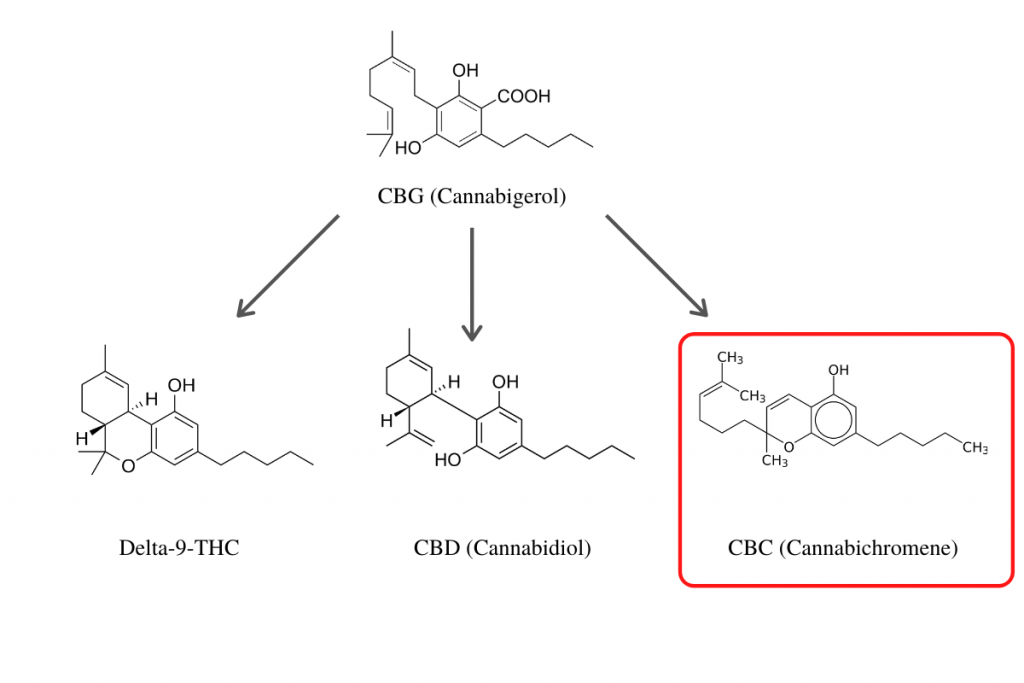
Selective breeding is a process that’s been used for centuries to “train” plants to develop certain characteristics we want. Breeders can do this with hemp plants to create new strains of plants that make specific cannabinoids in higher concentrations.
In the past, the primary focus was on THC levels. Through selective breeding, we’ve been able to increase the average THC content of cannabis plants from just 4% in 1995 [1] to 21% in 2020 [2].
The same process was later applied to CBD more recently, which has led to a dramatic increase in the average concentration of CBD in hemp flowers over the last 20 years as well. Most of this development has taken place within the last five years. Now it’s not uncommon to find hemp flowers with concentrations as high as 20% CBD.
Here’s how selective breeding works:
Selective breeding can take a long time. You need to go through several generations of the plant in order to pass along the ideal traits.
Every time two plants mate, the offspring contains a combination of traits from the parents. By only breeding plants with the ideal traits, you can ensure only these traits are passed onto the next generation. Over several generations, you can start to condition the plants to have the traits you’re looking for by ruling out the ones you don’t (in this case, low CBC levels).
It takes years to breed plants this way. CBC has only become more recognized over the last 2 or 3 years as a useful cannabinoid. This means it will likely take some time before high CBC strains are readily available on the marketplace.
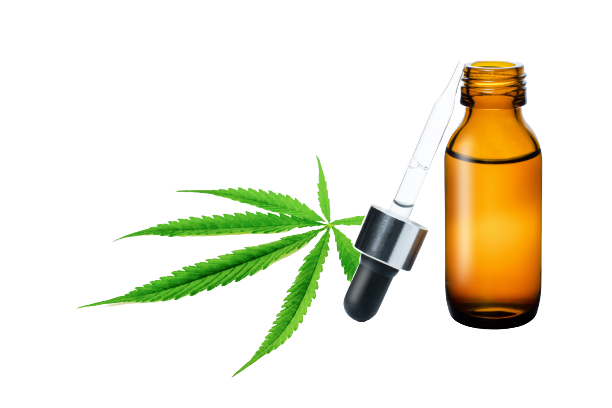
The initial rush of medical research focused on the two primary cannabinoids — CBD and THC. Now that we have a much stronger understanding of these two compounds, researchers are shifting their focus to look at some of the more minor cannabinoids — such as CBC.
So far, the results have been auspicious.
As more research is published every year on the health benefits of CBC, we expect to see a dramatic uptick in the production of new CBC products and CBC-rich hemp flowers.
It’s going to take several years for the CBC market to develop, but we’re already heading in the right direction.
CBC is best known for its ability to block pain (in a different way from CBD) and alleviate depression.